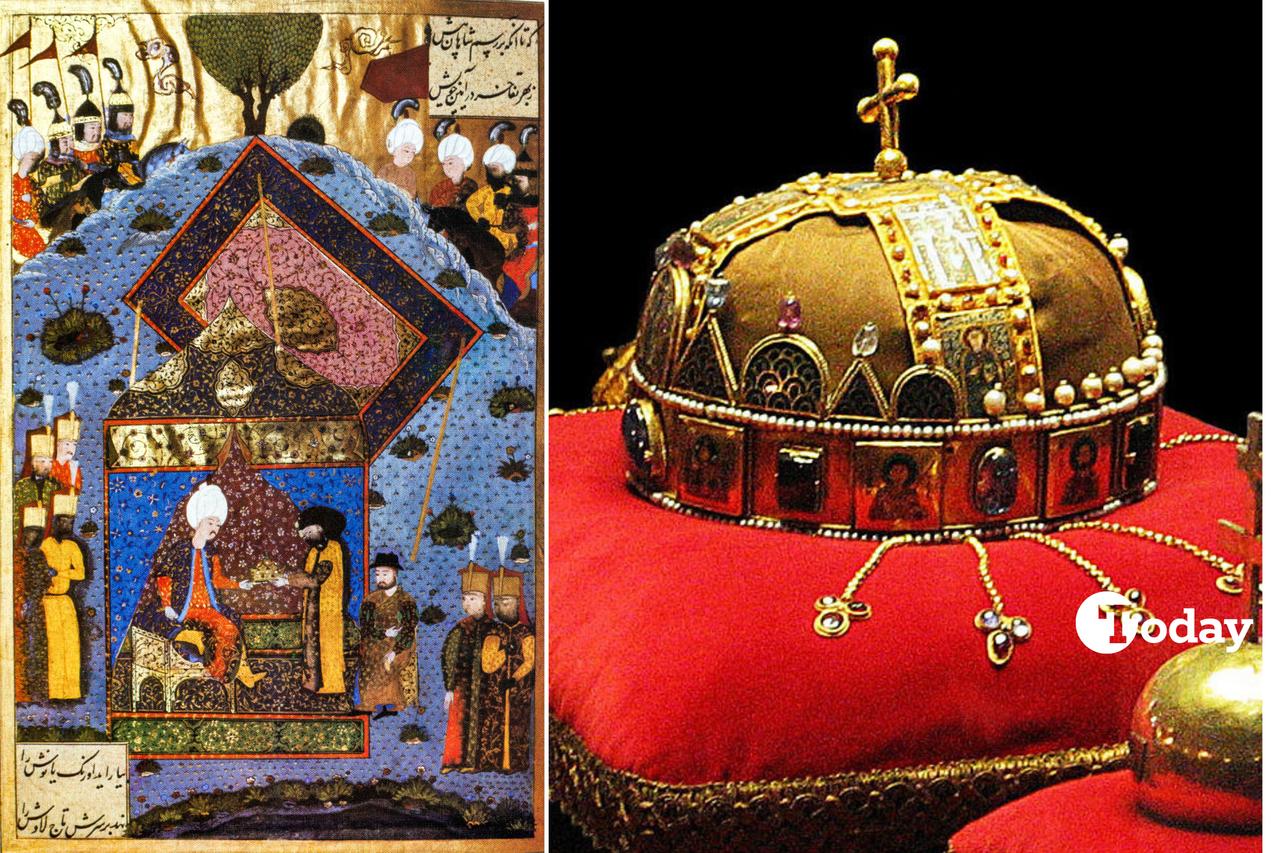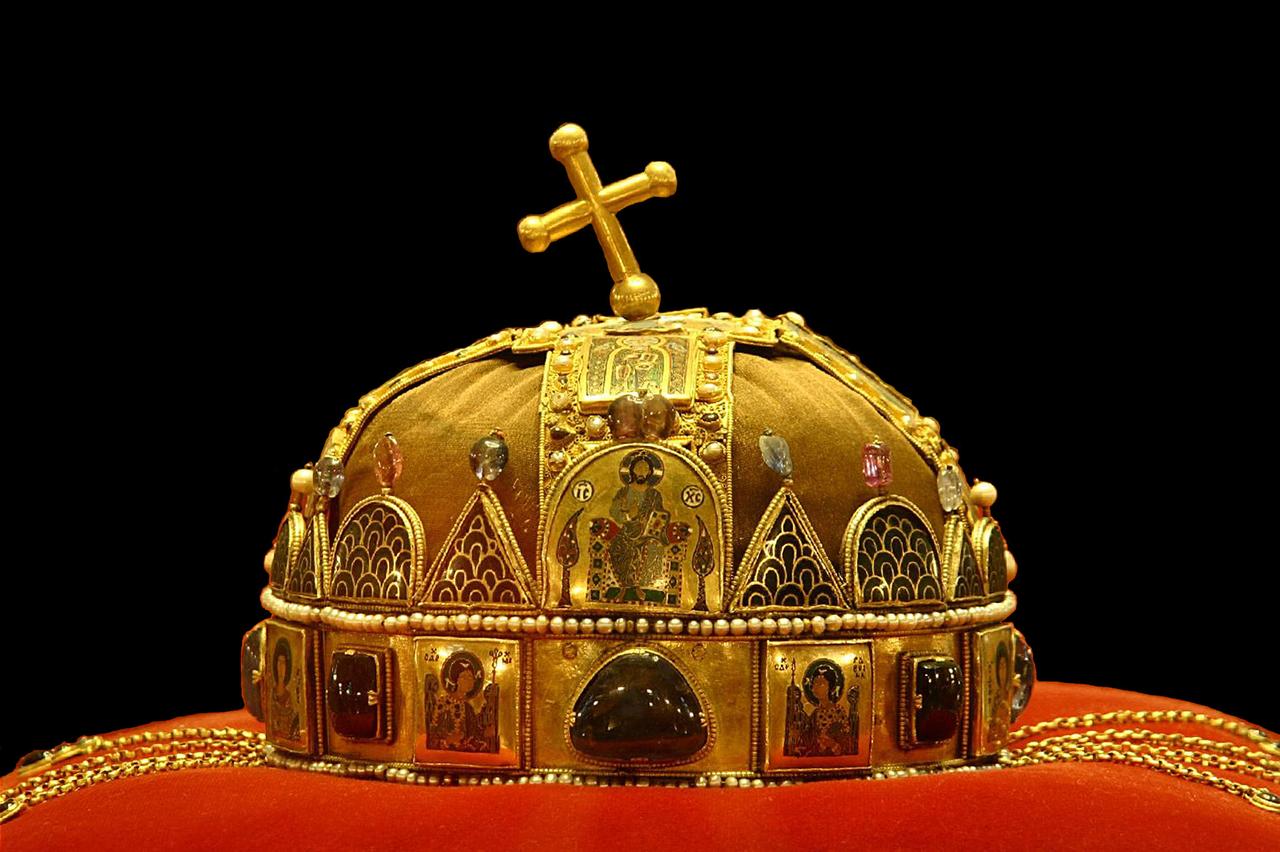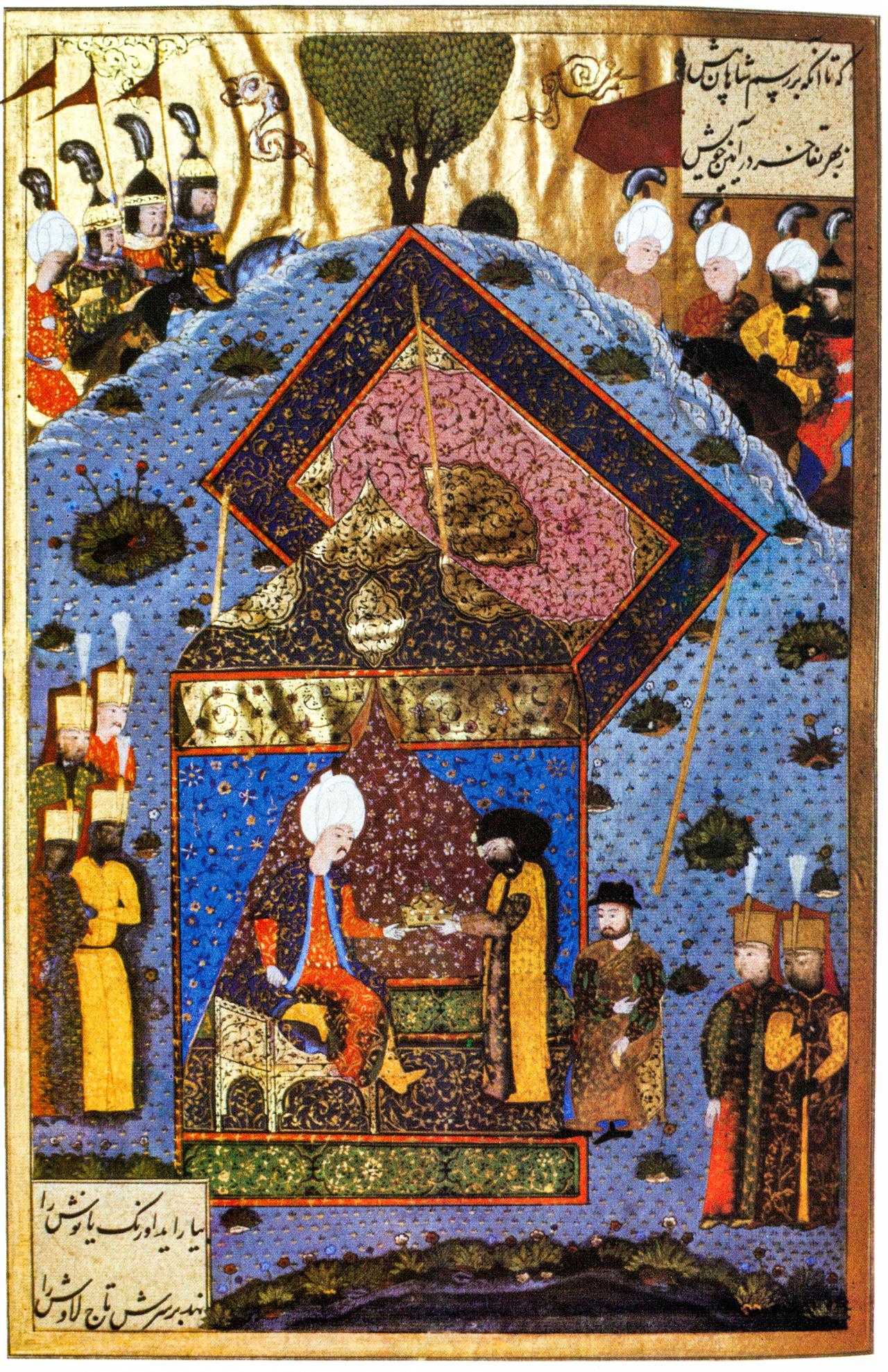
Hungary’s Ambassador to Türkiye, Viktor Matis, marked Aug. 20, St. Stephen's Day, by sharing a photo of the Holy Crown of Hungary in the hexagon-shaped central hall of the Hungarian Parliament, writing, “Today is the birthday of Hungary!”
The post points back to a crown whose power to legitimize rulers has shaped Hungarian history and, at one key moment, passed briefly through Ottoman hands.
Ottoman jurist Celalzade held that the crown conferred legitimacy, and events in the early 14th century bore that out. Charles Robert I of Anjou had to be crowned three times between 1301 and 1310 before the realm’s powerful barons would accept him, insisting that only the traditional Holy Crown settled the matter.
Tradition holds that St. Stephen, Hungary’s first Christian king, was crowned on Christmas Day in the year 1000 with a crown sent by Pope Sylvester II (the “Holy Crown,” also known as the Crown of Saint Stephen).

After the male Arpad line ended in 1301, Venceslas III was invited to take the throne but left in 1304, carrying the crown, drawing excommunication for his followers who helped “carry away the Holy Crown.”
In 1440, the crown was stolen; Ladislas V was nevertheless crowned as a 12-week-old baby. Weeks later, most barons elected Vladislas I, yet without the Holy Crown, he could not be regarded as lawful.
The realm fell back on a reproduction modeled on the crown depicted on St. Stephen’s reliquary (a container for a saint’s relics), backed by a declaration that it would share the same “signamentum, mysterium et robur.”
The statement framed the Holy Crown as belonging to the whole nation and embodying its right to find a suitable ruler, even as the belief that the original came from the Pope kept tensions alive.

Coronations had been held at Szekesfehervar since St. Stephen’s Day, and most kings were buried there; until 1527, all but two coronations took place in the city.
According to Nasuh, on the march toward Vienna, a castle submitted and “the Crown” was kept there as customary; the lords of Little Belgrad then brought it to the Ottoman sultan, kissing his hand, and he sent it on to Janos Szapolyai with a chief sergeant.
A Turkish miniature preserved at Topkapi Palace Museum (Inventory No.: Hazine 1517) depicts Ottoman sultan Suleiman I handing the Holy Crown to the Hungarian king after the Battle of Mohacs in 1526, underlining the crown’s brief Ottoman custody before it returned to anchor Hungarian sovereignty.